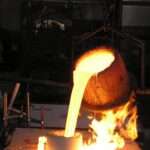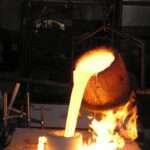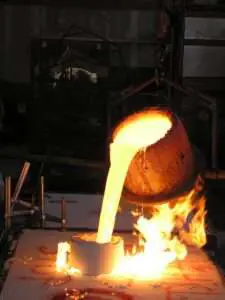
Fundamental Analysis And Intrinsic Value Of Hindustan Unilever Ltd. (2023-24)
In this article we will try to analyze Hindustan Unilever Ltd. based on previous six years of financial statements viz Balance sheet, Profit and Loss statement and Cash flow statement. With this fundamental analysis we will try to gain insight into the financial health, operating efficiency and profitability of the company and finally try to derive the intrinsic value of the stock using Discounted Cash Flow method and the price at which the stock becomes attractive for long term investment.
Dated: 30 Aug 23
Company: Hindustan Unilever Ltd.
CMP: Rs. 2535.00
Market Capitalisation: Rs. 5,95,621.38 Cr.
Intrinsic Value of Hindustan Unilever Ltd.
Hindustan Unilever Ltd. is India’s most prominent and largest consumer products company. HUL as it is known is a subsidiary of Unilever, a multinational company headquartered in UK. Some of the product segments in which the company operates are personal care, home care, food and beverages, healthcare and water purification. Some of the prominent brands owned by the company include dove, lux, sunsilk, pears, lifeboy, close up, pepsodent, surf excel, vim, rin, domex, kissan, kwality, knor, brooke bond and pureit etc. There is almost no house hold in India that is untouched by HUL.
Note: Here we are carrying out only the quantitative fundamental analysis of Hindustan Unilever Ltd. as the qualitative analysis is more subjective and individual views may vary vastly.
Before we enter into the calculation of Intrinsic value of Hindustan Unilever Ltd. we have to make some logical assumptions based on the previous six years financial statements and ongoing yield for 10y Government Of India bonds.
Assumptions:
- Terminal growth rate is assumed to be 0%.
- Discount rate is assumed to be 12%.
- Free cash flow will be 15% of revenues in future. The FCF/Revenue ratio for the period under consideration has an average of 0.15. We assume that this ratio will hold good for future.
Based on the above assumptions we have arrived at two levels as intrinsic value of the firm. One is based on extrapolation of Free Cash Flow and the other is based on Free cash flows derived from extrapolated values of revenues. Both the methods only differ in how the input values are derived; in both the cases the present value is arrived at using Discounted Cash Flow Method.
Free Cash Flow Growth Model
Intrinsic Value: Rs. 253.48
Stock Entry price with 25% margin of safety: Rs. 190.11
Revenue Growth Model
Intrinsic Value: Rs. 374.47
Stock Entry price with 25% margin of safety: Rs. 280.86
The average of the above two stock entry prices works out to be Rs. 235.48. When the stock starts trading below this price it becomes attractive for long term investment.
****************************************************
Fundamental Analysis Of Hindustan Unilever Ltd.
Leverage Ratios




Observations:
- The company is operating with no debt.
Operating Ratios




Observations:
- The company has maintained healthy receivables turnover ratio even during COVID period.
Profitability Ratios







Observations:
- . The company has been able to achieve a steady growth in PAT and EBITDA and all the while has maintained stable margins showing its dominance over the market in its respective product categories.
- All other ratios ROA, ROE and ROCE have shown a decline during the period.
Author
Jibu Dharmapalan
Fundamental Analyst
Disclaimer:
This article is for educational purpose only. Investment in securities market is subject to market risks. Please consult your Financial Advisor before investing.
If You Like This Content 👇👇👇
Click Here To Join Us on Facebook For Free Live Interactive Discussion And Learning
References:
https://www.bseindia.com/stock-share-price/hindustan-unilever-ltd/hindunilvr/500696/financials-annual-reports/
https://www.hul.co.in/investor-relations/annual-reports/
Click Here for Home
FAQs
What is Intrinsic Value?
Ans: When someone invests in an asset, he does so in order to earn money from the business. The investor gets paid over a period of time as long as he is invested in the asset. Now intrinsic value is the present value of all such future cash flows generated by the asset. So logically one should not invest in any asset if the ask price is more than the intrinsic value of the asset.
How is Intrinsic Value of a company calculated?
Ans: For calculating the intrinsic value of a company all its future cash flows are extrapolated based on the past performance of the company, assumptions about the future growth of the company and its terminal value. Once all these are calculated these are brought to the present date based on appropriate discounting rate. The sum of all these gives the intrinsic value of the company. It may be more or less than the market capitalization of the company. If it is more than the market capitalization of the company then the company is said to be undervalued and is a good bet as a long-term investment and vice versa.
How is Intrinsic Value of a share calculated?
Ans: Once intrinsic value of a company is calculated as explained above, it is divided by the total number of outstanding shares of the company. This gives the intrinsic value of a share.
What is Discounted Cash Flow?
Ans: When we have cash flows that are spread over a period of time then Discounted Cash Flow method is used to calculate present value of all such cash flows. The present value depends on the discounting rate used. Usually 10 year Government bond yield rate(risk free rate of return) is used as the discounting rate.

















